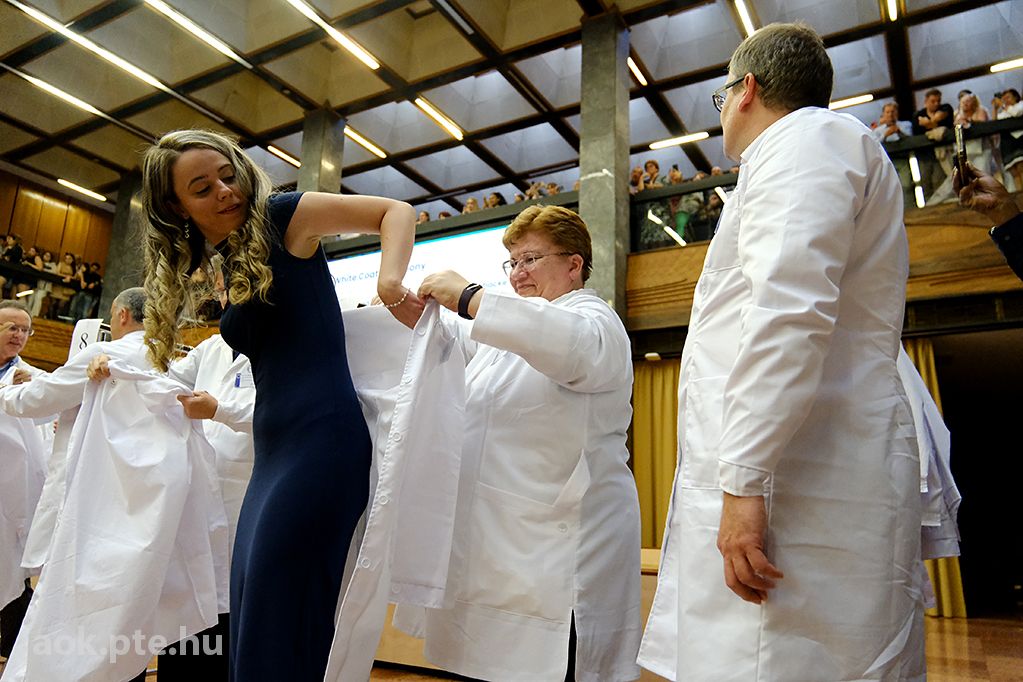At the University of Pécs Medical School, the moment when
students slip into their white coats for the first time is more than
symbolic—it’s transformative. The annual White Coat Ceremony marks a profound
turning point: the passage from theory to practice, from classroom study to
clinical experience.
More Than Just a Coat
The white coat has long stood as an emblem of the medical profession, representing trust, responsibility, and care. At Pécs, receiving this garment is not simply a tradition—it’s a pledge. Students step into the role of future physicians and dentists, acknowledging the values of compassion, professionalism, and ethical responsibility that the coat demands.
An Unforgettable Milestone
Held in the grand Dr. Romhányi György Aula, the ceremony brings together students from the Hungarian, English, and German programs alongside faculty, mentors, and families. University leaders deliver speeches that balance pride with expectation, reminding students of both the progress they’ve made and the challenges that lie ahead.
Each student is called forward to receive their coat, often greeted by applause and warm encouragement. For many, it is an emotional moment—a visible affirmation that years of hard work have carried them across the threshold into the world of clinical medicine.
Voices of the Future
Students frequently describe the ceremony as one of the most moving experiences of their medical journey. “It makes everything real,” one participant reflected. “We’re no longer just studying about medicine—we’re stepping into it.”
That sense of responsibility resonates deeply. The ceremony is both a celebration and a reminder: the white coat comes with a duty to uphold the dignity of the profession, to care for patients with empathy, and to continue learning with humility.
Looking Ahead
Whether in medicine or dentistry, the White Coat Ceremony at Pécs is more than a formal event—it is a rite of passage. Each coat placed on a student’s shoulders carries with it the weight of history and the promise of the future.
As the students leave the Aula in their new attire, the fabric may be crisp and white, but it already bears something invisible: the hopes of their teachers, their families, and the patients whose lives they will one day touch.
